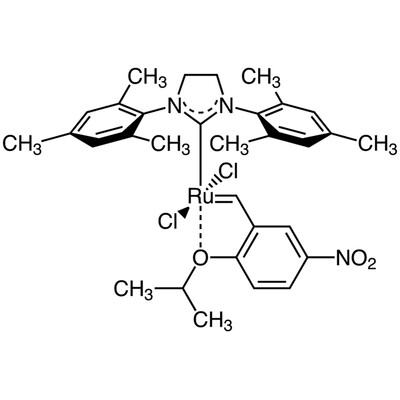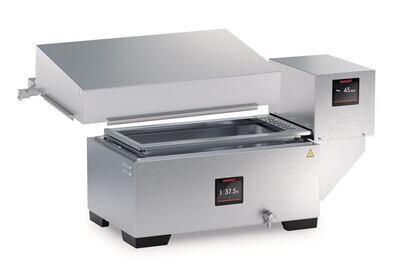Verzending 24–48 u • Levering in de hele EU • Veilige chemieverpakking
Rhodium(III) sulfate solution 1 g
SKU 006769-1
€ 155,93
In stock
1
Save this product for later
Rhodium(III) sulfate solution 1 g
Product Details
CAS number: 10489-46-0
Cation: Ro
Packaging: 1 g
EAN: 8721028246097
Brand: Laboratoriumdiscounter
Rhodium(III) sulfate solution is a highly sought-after chemical compound used in various industrial applications. With its unique properties and exceptional stability, this solution is widely utilized in catalysis, electroplating, and organic synthesis. Its effectiveness in promoting chemical reactions and enhancing product yields makes it an indispensable tool for researchers and manufacturers alike. Discover the power of Rhodium(III) sulfate solution and unlock new possibilities in your scientific endeavors.
When working with Rhodium(III) sulfate solution, it is important to follow safety instructions to ensure your well-being and prevent any accidents. Here are some short safety instructions to consider: 1. Personal Protective Equipment (PPE): Always wear appropriate PPE, including gloves, safety goggles, and a lab coat or protective clothing, to protect your skin, eyes, and clothing from potential exposure. 2. Ventilation: Work in a well-ventilated area or under a fume hood to minimize inhalation of any fumes or vapors that may be released during handling. 3. Handling: Handle the Rhodium(III) sulfate solution with care, avoiding any spills or splashes. Use a pipette or other appropriate tools to transfer the solution, ensuring accuracy and minimizing the risk of contact. 4. Storage: Store the solution in a properly labeled, tightly sealed container in a cool, dry place away from incompatible substances. Follow any specific storage instructions provided by the manufacturer. 5. Chemical Compatibility: Be aware of the chemical compatibility of Rhodium(III) sulfate solution with other substances. Avoid mixing it with incompatible materials, as it may lead to hazardous reactions or release of toxic gases. 6. Emergency Preparedness: Familiarize yourself with the location and proper use of safety equipment, such as eyewash stations, safety showers, fire extinguishers, and spill kits. In case of accidental exposure or spillage, know the appropriate steps to take and seek medical attention if necessary. 7. Disposal: Dispose of any waste or unused Rhodium(III) sulfate solution according to local regulations and guidelines. Do not pour it down the drain or dispose of it in regular trash bins. 8. Training: Ensure that you have received proper training on the handling and use of Rhodium(III) sulfate solution before working with it. Familiarize yourself with its properties, hazards, and safe handling procedures. Remember, these are general safety instructions, and it is essential to consult the specific safety data sheet (SDS) and follow any additional guidelines provided by the manufacturer for the Rhodium(III) sulfate solution you are using.
Please note, not all safety data for this product is available on our website, for a complete list of P en H sentences and other safety instructions please request the MSDS at our customer service
You May Also Like

4-ETHOXY-3-METHOXYBENZYL ALCOHOL, 97.0%, 10g
4-ETHOXY-3-METHOXYBENZYL ALCOHOL, 97.0%, 10g
SKU F470847-10G
€ 601,70

3-PHENYLOXETANE-3-CARBOXYLIC ACID, 95.0%, 100mg
3-PHENYLOXETANE-3-CARBOXYLIC ACID, 95.0%, 100mg
SKU F466901-100MG
€ 251,90

1-Isopropyl-1H-1,2,3-triazole, 97.0%, 250mg
1-Isopropyl-1H-1,2,3-triazole, 97.0%, 250mg
SKU F540359-250MG
€ 22,00
Display prices in:EUR

![Crystal Violet Nonahydrate [Ion association reagent for spectrophotometric analysis]>97.0%(T)1g Crystal Violet Nonahydrate [Ion association reagent for spectrophotometric analysis]>97.0%(T)1g](https://d2j6dbq0eux0bg.cloudfront.net/images/88473019/4045022607.jpg)




![tert-butyl 3-[(butan-2-yl)amino]propanoate, 95.0%, 10g tert-butyl 3-[(butan-2-yl)amino]propanoate, 95.0%, 10g](https://d2j6dbq0eux0bg.cloudfront.net/images/88473019/4771585621.png)

![METHYL 2-(BENZO[D]OXAZOL-2-YL)ACETATE, 95.0%, 1g METHYL 2-(BENZO[D]OXAZOL-2-YL)ACETATE, 95.0%, 1g](https://d2j6dbq0eux0bg.cloudfront.net/images/88473019/4868575598.png)

